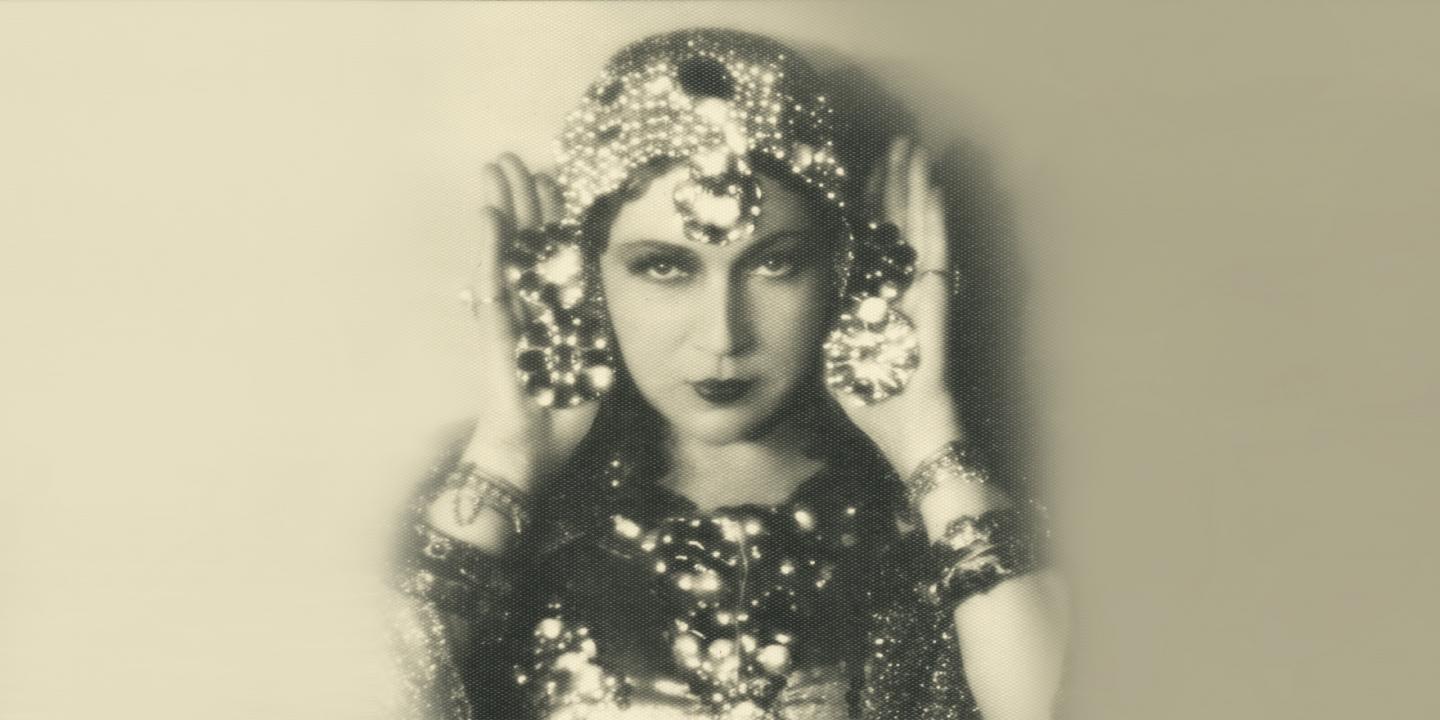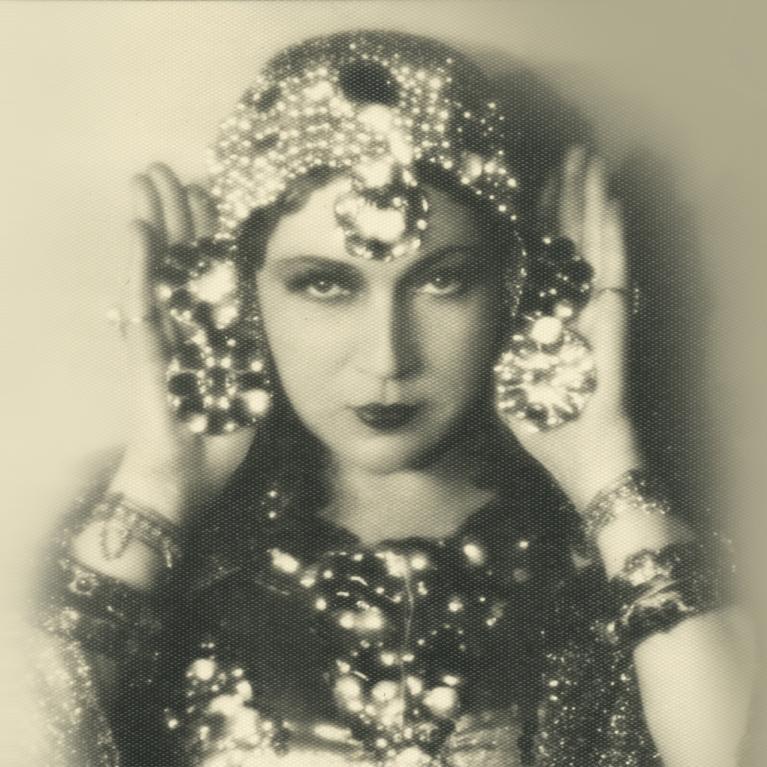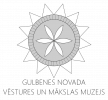30.11.2024. - 16.03.2025.
Latvian National Museum of Art
Ludolfs Liberts (1895-1959). The Hypnotic Brilliance of Art Deco
From 30 November 2024 to 16 March 2025, the Latvian National Museum of Art in Riga (Jaņa Rozentāla laukums 1) presents the exhibition Ludolfs Liberts (1895–1959). The Hypnotic Brilliance of Art Deco.
Ludolfs Liberts is one of the brightest exponents of Art Deco in Latvia and its most vivid manifestation is his stage designs. Without exaggeration it may be said that the 1920s–30s at the Latvian National Opera were the era of Liberts. Between 1924 and 1937, altogether he designed 43 and directed 12 productions. Liberts set the tone, influenced his colleagues and was at the centre of attention from critics and spectators alike. Master’s stage designs left no one indifferent: many were thrilled and applauded the set designs, others criticised and attacked him for overgeneralisation, flamboyance and excessive decorativeness.
Yet, from today’s perspective, it is clear that all of Ludolfs Liberts’ accomplishments in this field conform entirely to the style of Art Deco, which is characterised by an inclination towards geometricisation and ornamentalisation of forms, decorativeness, refined graphic qualities, a tendency to enchant and dazzle the viewer. Liberts possessed a phenomenal ability to sense current artistic trends, his sketches for stage designs and costumes show motifs favoured by the artists of Art Deco – skyscrapers, the cascading rhythms of fountains, zigzags and other geometric ornaments. Liberts turned to the heritage of non-European cultures, responded to the widespread Egyptomania and referred to the general fascination with the cinematograph, which influenced theatre and the leading directors of the time.
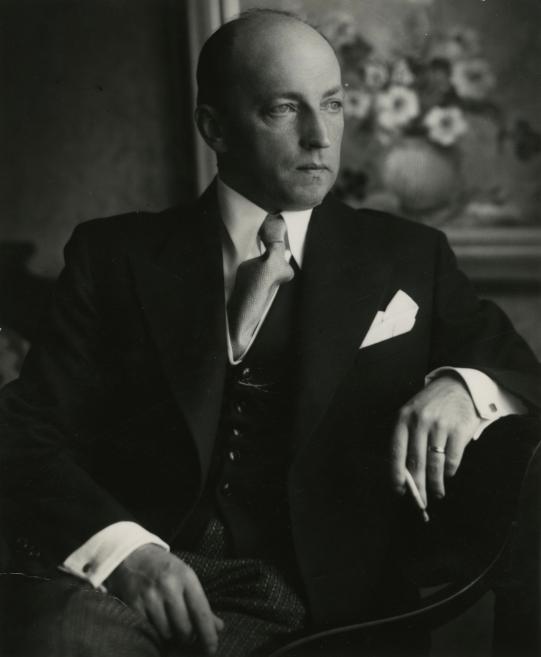
Ludolfs Liberts. Early 1930s. Unknown photographer. Collection of the Latvian National Museum of Literature and Music, Riga. Publicity photo
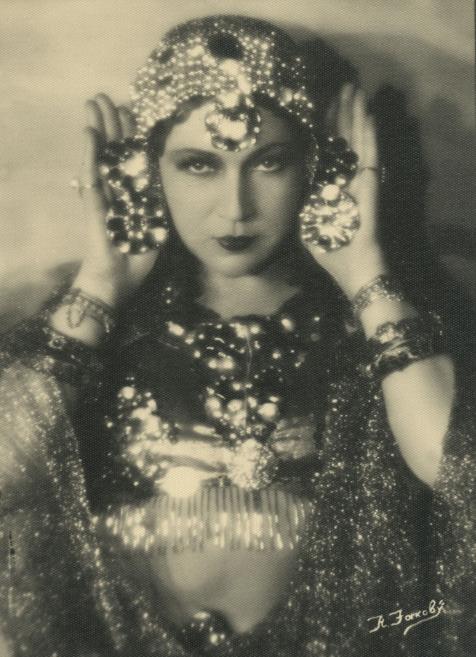
Milda Brehmane-Štengele as the Queen of Sheba in Karl Goldmark’s opera Die Königin von Saba. Costume design by Ludolfs Liberts (premiere at the Latvian National Opera 20.03.1935, director Ludolfs Liberts, conductor Teodors Reiters). 1935. Unknown photographer. Collection of the Latvian National Museum of Literature and Music, Riga. Publicity photo
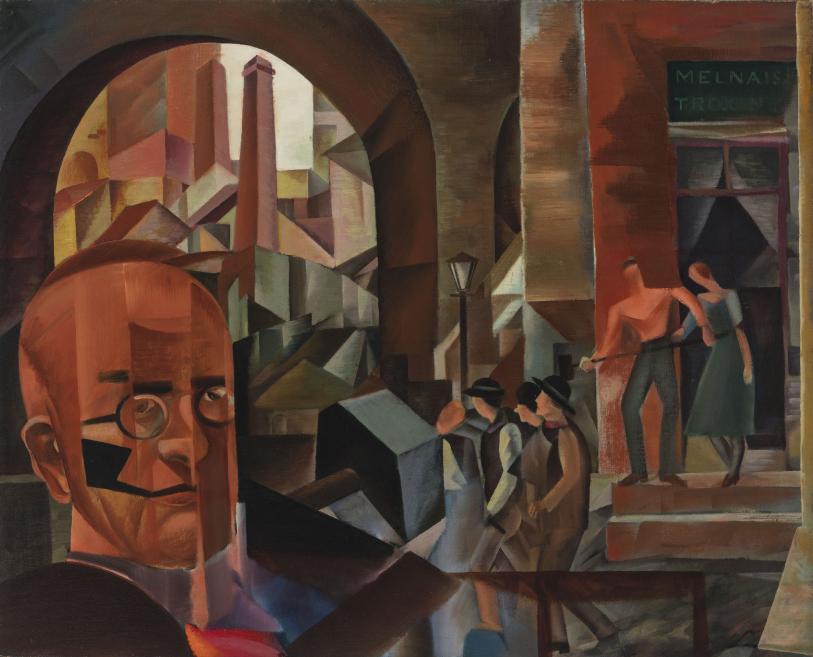
Ludolfs Liberts. Portrait with Arch in the Background. 1923. Oil on canvas. Collection of the Latvian National Museum of Art, Riga. Photo: Normunds Brasliņš
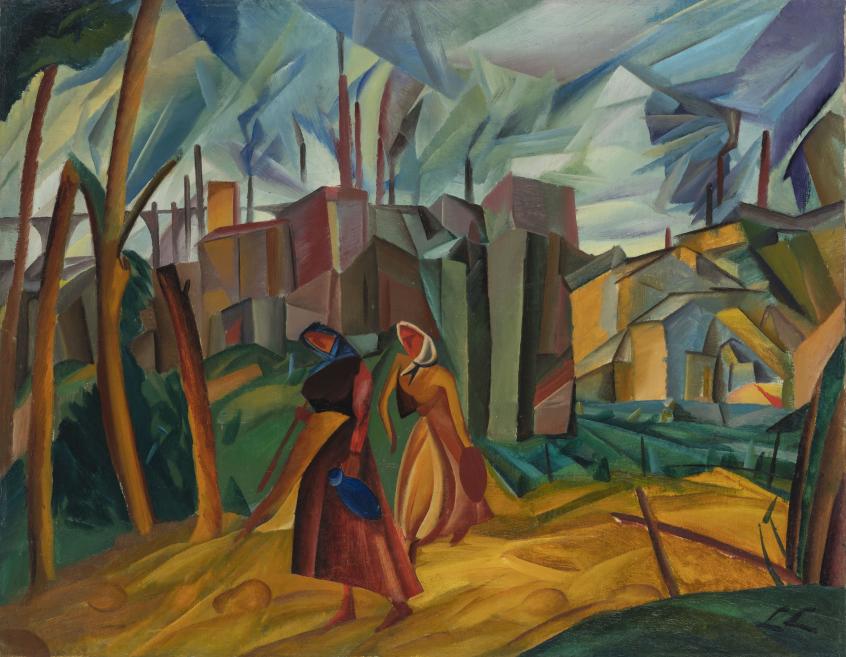
Ludolfs Liberts. Women on the Road. 1923. Oil on canvas. Collection of the Latvian National Museum of Art, Riga. Photo: Normunds Brasliņš
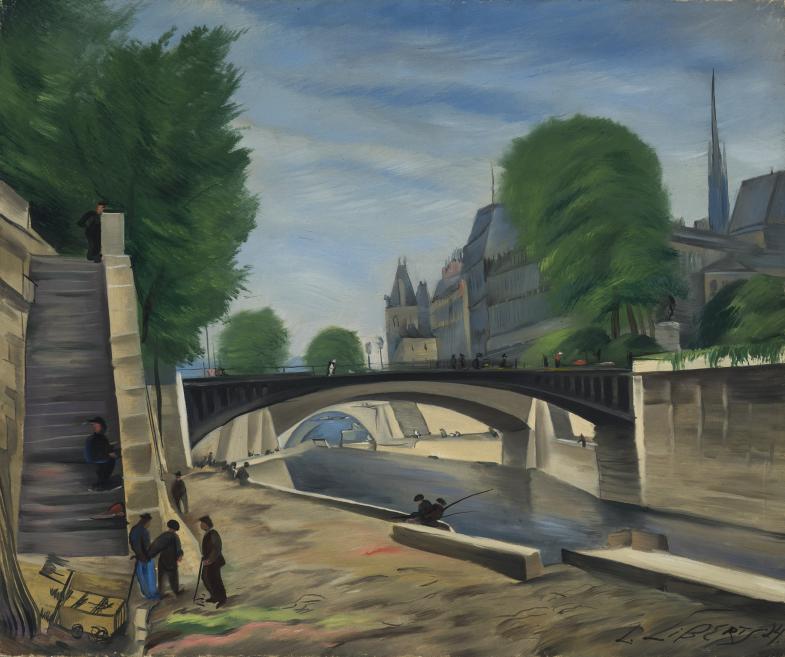
Ludolfs Liberts. The Seine. 1924. Oil on canvas. Collection of the Latvian National Museum of Art, Riga. Photo: Normunds Brasliņš
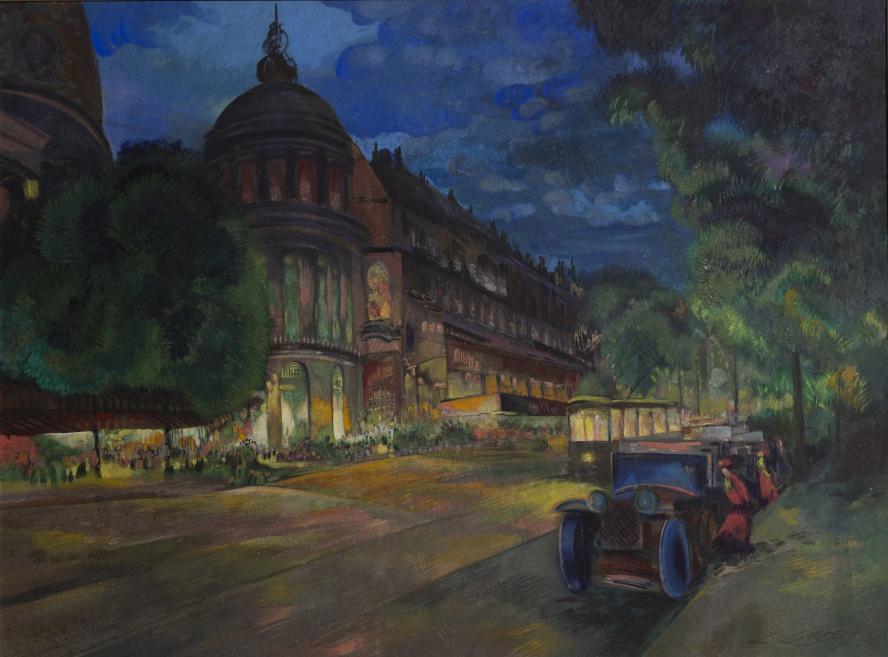
Ludolfs Liberts. ‘Printemps’ Supermarket in Paris. 1927. Tempera on cardboard. Private collection. Photo: I. Fridmans
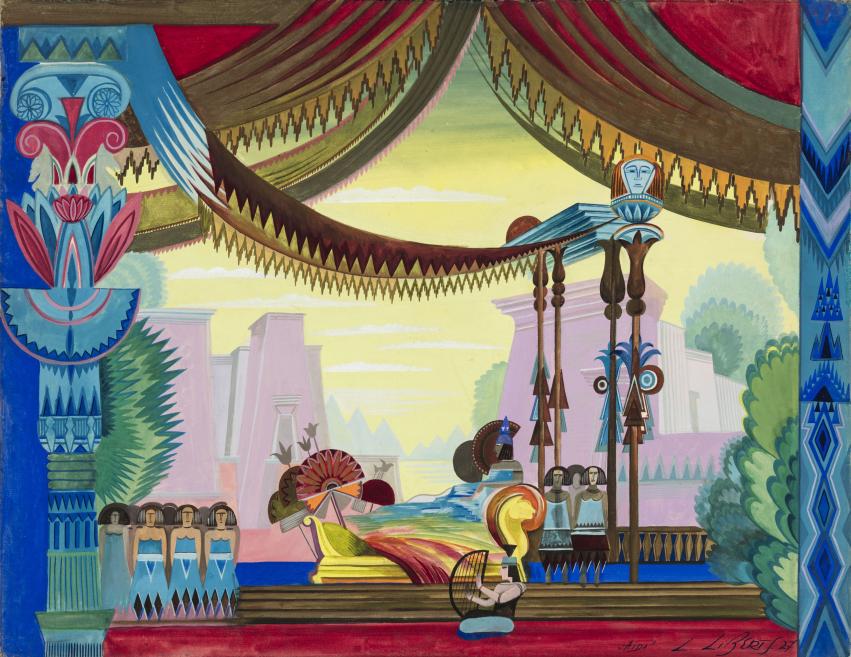
Ludolfs Liberts. Set design for Giuseppe Verdi’s opera Aida (premiere at the Kaunas State Theatre 10.11.1926, director Nikolai Tikhomirov, conductor Mykolas Bukša). 1926. Gouache on cardboard. Collection of the Latvian National Museum of Art, Riga. Publicity image

Ludolfs Liberts. Amneris. Costume design for Giuseppe Verdi’s opera Aida (premiere at the Kaunas State Theatre 10.11.1926, director Nikolai Tikhomirov, conductor Mykolas Bukša). 1926. Pencil, tempera, silver, and ink on cardboard. Collection of the Lithuanian Theatre, Music and Cinema Museum, Vilnius. Publicity image
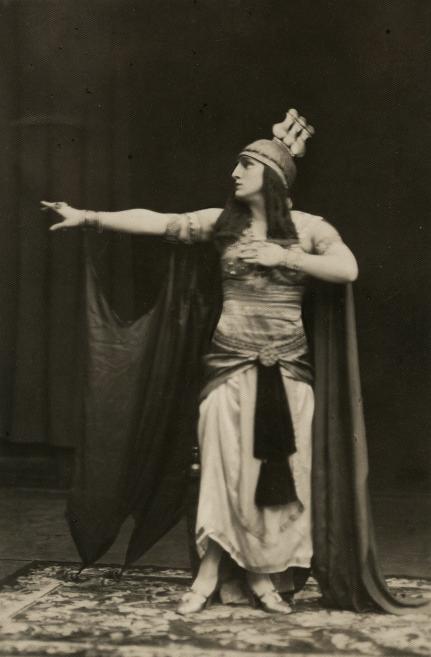
Vincė Jonuškaitė as Amneris in Giuseppe Verdi’s opera Aida (premiere at the Kaunas State Theatre 10.11.1926, director Nikolai Tikhomirov, conductor Mykolas Bukša). 1926. Unknown photographer. Collection of the Lithuanian Theatre, Music and Cinema Museum, Vilnius. Publicity photo
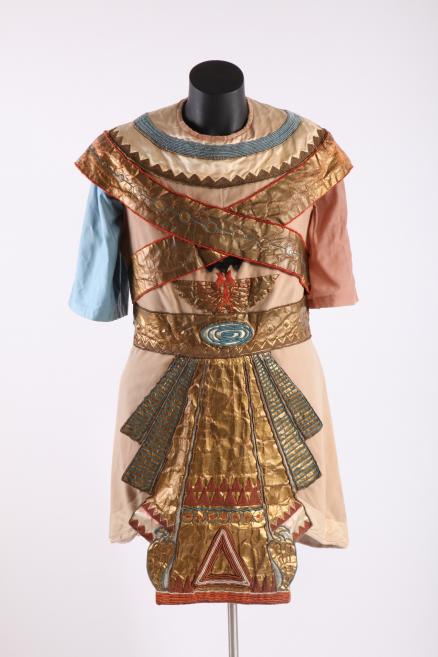
Radames’ costume made after Ludolfs Liberts design for Giuseppe Verdi’s opera Aida (premiere at the Kaunas State Theatre 10.11.1926, director Nikolai Tikhomirov, conductor Mykolas Bukša). The costume belonged to the solist Kipras Petrauskas. 1926. Cotton, satin, silk, metallic thread. Collection of the Lithuanian Theatre, Music and Cinema Museum, Vilnius. Publicity photo
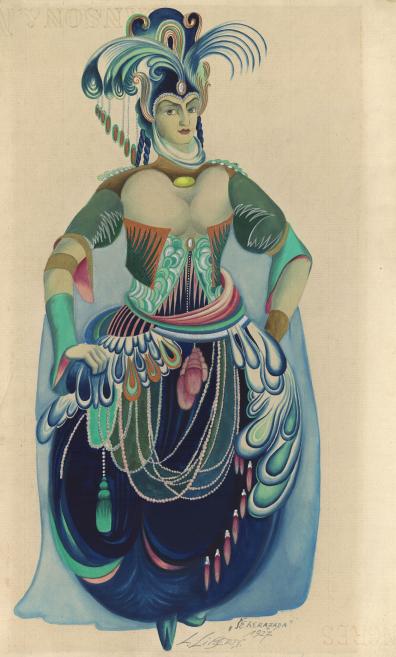
Ludolfs Liberts. Scheherazade. Costume design for the ballet The Raja’s Dream of Anna Pavlova’s ballet company. Unrealised. 1927. Watercolour, tempera, silver, gold and bronze on paper and cardboard. Collection of the Latvian National Museum of Literature and Music, Riga. Publicity image
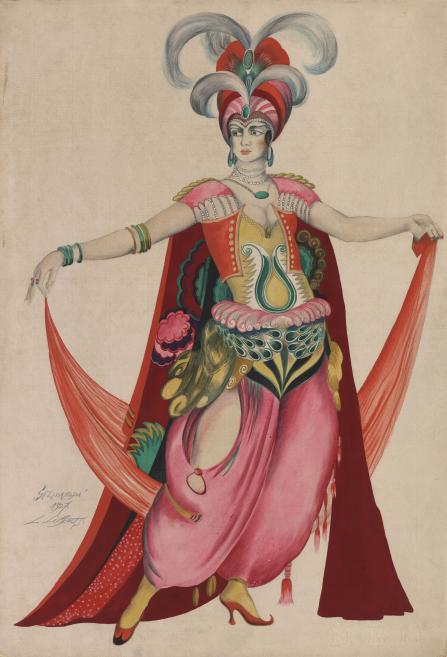
Ludolfs Liberts. Scheherazade. Costume design for the ballet The Raja’s Dream of Anna Pavlova’s ballet company. Unrealised. 1927. Watercolour and tempera on paper and cardboard. Collection of the Latvian National Museum of Literature and Music, Riga. Publicity image

Ludolfs Liberts. Shahriar. Costume design for the ballet The Raja’s Dream of Anna Pavlova’s ballet company. Unrealised. 1927. Watercolour, tempera and bronze on paper and cardboard. Collection of the Latvian National Museum of Literature and Music, Riga. Publicity image
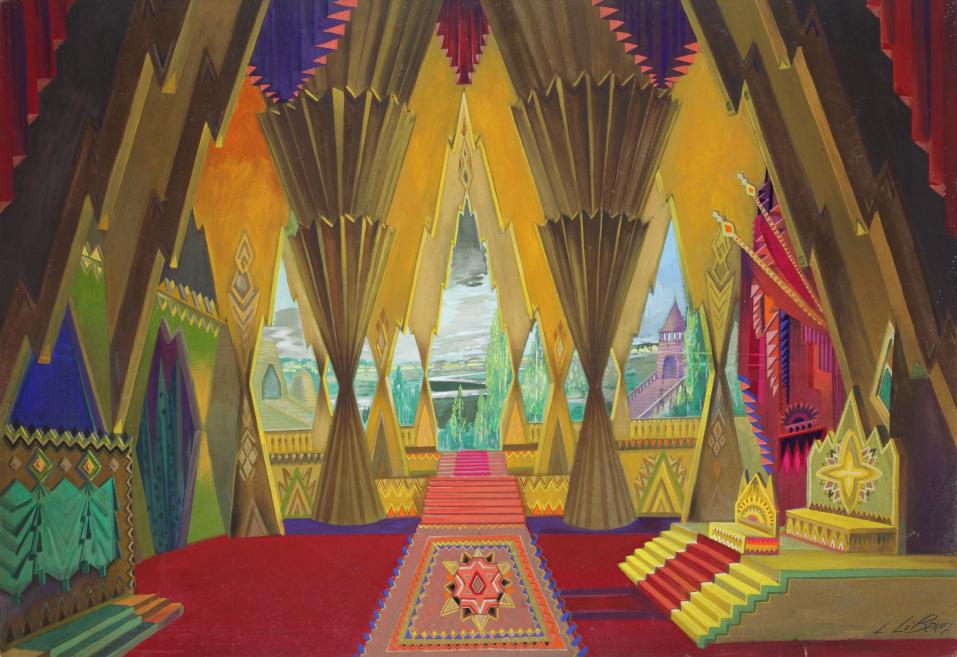
Ludolfs Liberts. King’s Palace. Set design for Jānis Mediņš’s opera Sprīdītis (premiere at the Latvian National Opera 22.01.1927, director Fricis Rode, conductor Jānis Mediņš). 1927. Tempera on cardboard. Theatre Studies Collection of Institute for Media Culture and Theatre, University of Cologne (Theaterwissenschaftliche Sammlung, Universität zu Köln). Publicity photo
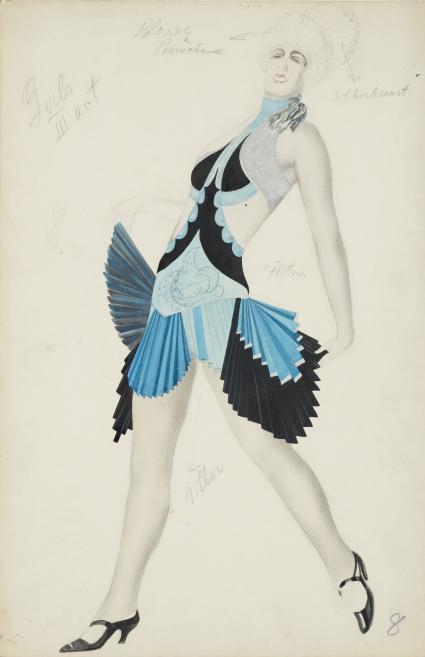
Ludolfs Liberts. Costume design for the girls in Ernst Krenek’s opera Jonny spielt auf (premiere at the Latvian National Opera 20.12.1929, director Ludolfs Liberts, conductor Oto Karls). 1929. Pencil, gouache, Indian ink, and silver on paper and cardboard. Collection of the Latvian National Museum of Art, Riga. Publicity image
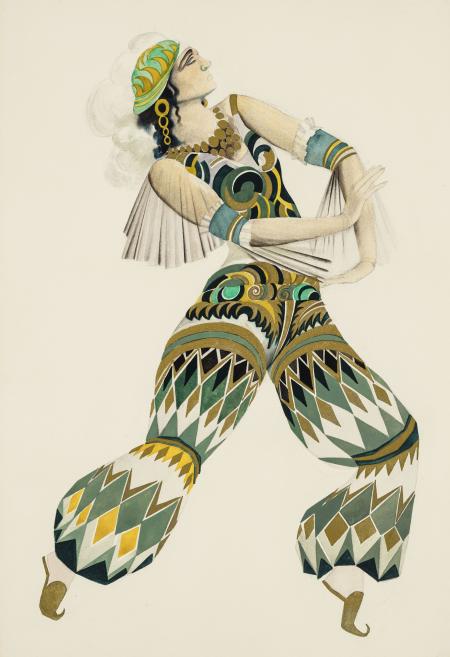
Ludolfs Liberts. Costume design for Nikolai Rimsky-Korsakov’s ballet Scheherazade (premiere at the Latvian National Opera 26.05.1930, choreographer Leonid Zhukov, conductor Teodors Reiters). 1930. Watercolour, gouache and bronze on paper. Collection of the Latvian National Museum of Art, Riga. Publicity image
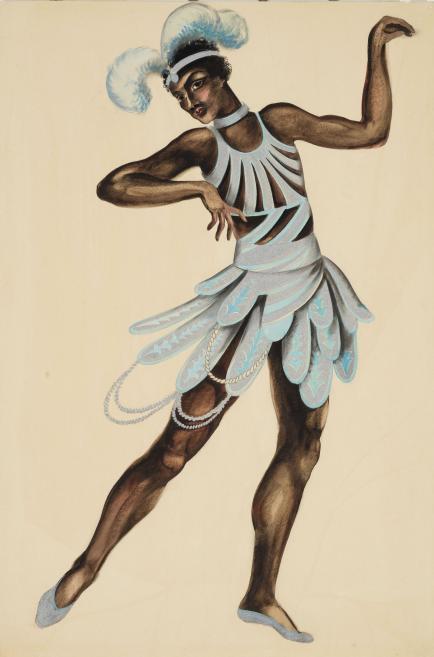
Ludolfs Liberts. Armide’s slave. Costume design for Nikolai Tcherepnin’s ballet Le Pavillon d’Armide (premiere at the Latvian National Opera 06.11.1930, choreographer Aleksandra Fyodorova, conductor Teodors Reiters). 1930. Watercolour and silver on paper and cardboard. Collection of the Latvian National Museum of Art, Riga. Publicity image
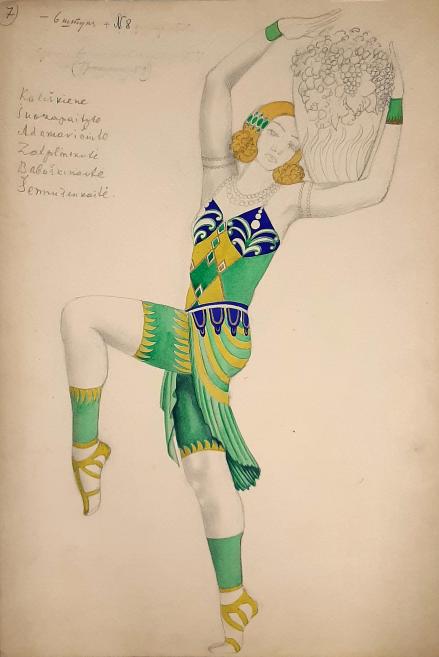
Ludolfs Liberts. Costume design for Camille Saint-Saëns’ opera Samson and Delilah (premiere at the Kaunas State Theatre 08.05.1931, director Feofan Pavlovsky, conductor Mykolas Bukša). 1931. Pencil, gouache and gold on cardboard. Collection of the Latvian National Museum of Art, Riga. Publicity image
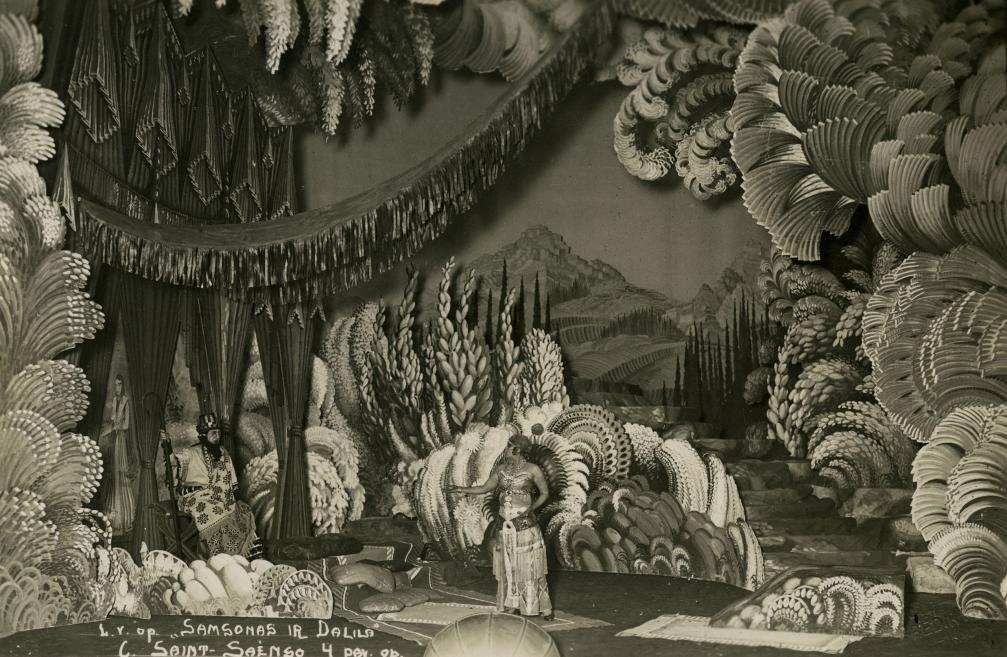
View from Act II of Camille Saint-Saëns’ opera Samson and Delilah (premiere at the Kaunas State Theatre 08.05.1931, director Feofan Pavlovsky, conductor Mykolas Bukša). 1931. Unknown photographer. Collection of the Lithuanian Theatre, Music and Cinema Museum, Vilnius. Publicity photo
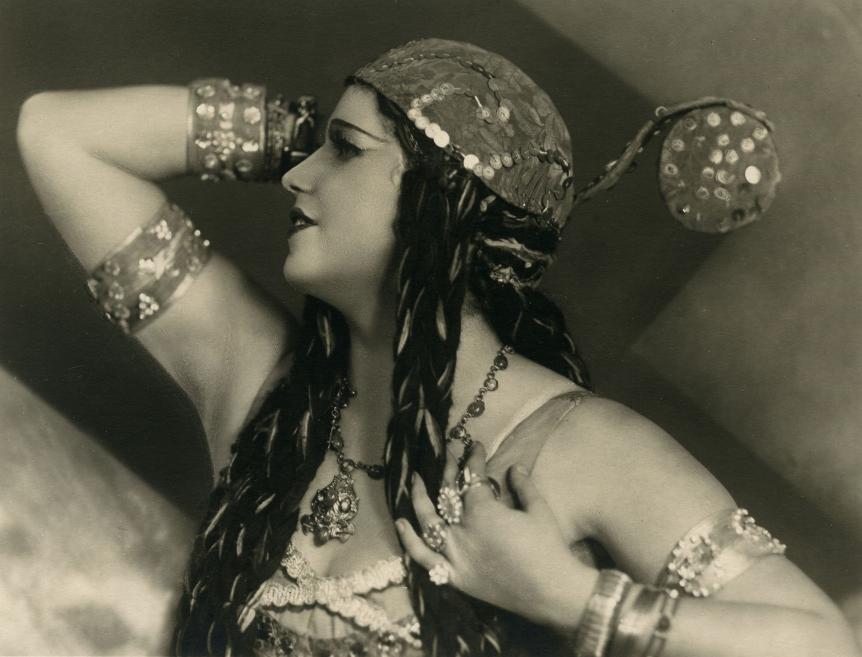
Marija Lipčiene as Delilah in Camille Saint-Saëns’ opera Samson and Delilah (premiere at the Kaunas State Theatre 08.05.1931, director Feofan Pavlovsky, conductor Mykolas Bukša). Photo studio Zinaida, 1931. Collection of the Lithuanian Theatre, Music and Cinema Museum, Vilnius. Publicity photo
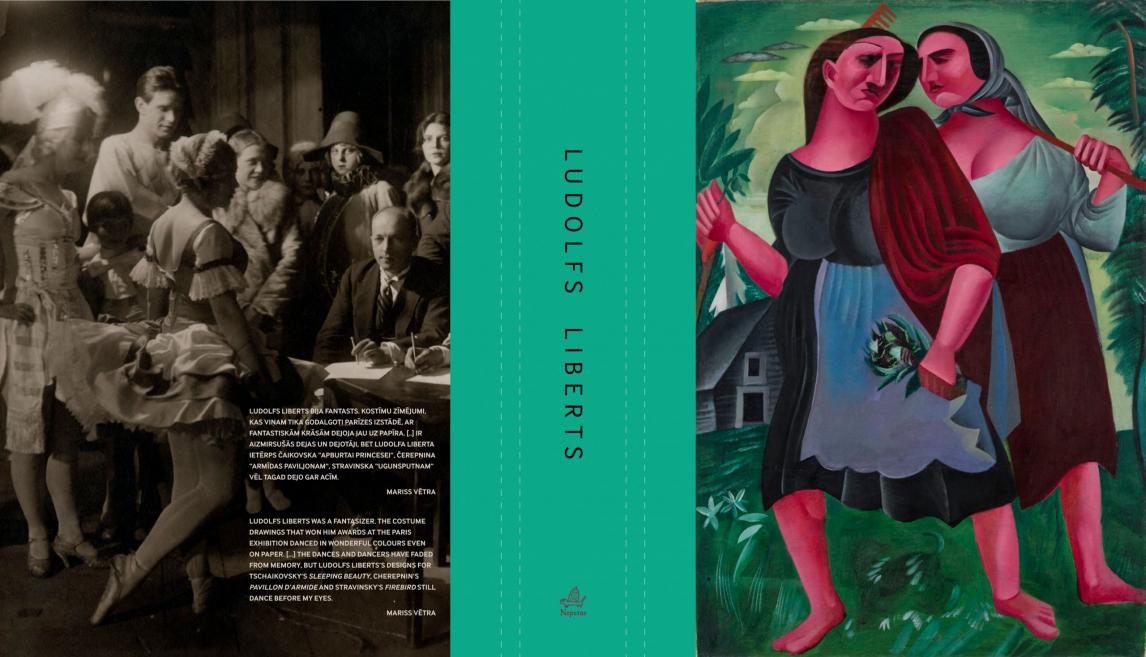
Covers of the art album Ludolfs Liberts. Neputns Publishers, series Great Classics of Art, 2024. Designer: Brālis Y. Publicity photo
Ludolfs Liberts is one of the few modernists outside of the Riga Group of Artists. Despite being in close contact with members of the legendary association and having taken part in a number of shared projects (drawing caricatures for the magazine
Ho-Ho, decoration of the walls of café
Sukub), Liberts never became a full member of the group. The style of artist’s paintings from the 1920s stands apart from the work of contemporaries. His application of modernist principles suggests an original interpretation of French modern art and Russian Cubo-Futurism.
In the 1930s, like many Latvian artists of the time, Ludolfs Liberts took an active interest in the distant past, freely engaging in fantasies about historical subjects and images. Liberts’ numerous cityscapes largely reflect his work in theatre – the author frequently painted a variety of lighting effects, streets in nightly illumination. In their colour schemes and compositional structure, these works to some extent resemble theatre backdrops.
Ludolfs Liberts’ biography is similar to that of other Latvian artists of his generation: he was born in the province, began his art studies in Riga and continued them in Russia (Moscow and Kazan), during World War I found himself at the front. In the 1920s–30s Liberts worked actively in his native land and regularly participated in exhibitions abroad, while towards the end of World War II master was forced to emigrate and spent the rest of his life in the USA. Ludolfs Liberts is among the few Latvian artists to have managed to hold solo exhibitions in Paris (1927), Brussels (1929), Berlin (1930, 1938), Stockholm (1938), and Copenhagen (1938). Liberts participated in international stage design exhibitions, where his works often received awards. The artist’s sketches for theatre, opera and ballet productions are held not only in the depositories of memory institutions in Latvia but also several museums and collections abroad.
This exhibition is Ludolfs Liberts’ first retrospective of such magnitude. Most of the works go on public display for the first time. The exhibition presents works from the Latvian National Museum of Art, Lithuanian Theatre, Music and Cinema Museum, Latvian National Museum of Literature and Music, Museum of the History of Riga and Navigation, Gulbene Municipality History and Art Museum, Latvian National Opera, Lithuanian Archives of Literature and Art, Rietumu Bank, Zuzāns Collection, and other private collections.
Coinciding with the exhibition,
Neputns Publishers is releasing as part of its series
Great Classics of Art the monographic art album
Ludolfs Liberts (compiler and editor-in-chief – Laima Slava, designer – Brālis Y). The book is conceived as a lavish dedication to the painter, whose works today strike with their mighty temperament, diversity of themes, brilliant Art Deco sensibility and breadth of imagination in stage design. Authors of the texts, recognised experts in their fields – Dace Lamberga, Natalya Yevseyeva, Edīte Tišheizere, Helmutas Šabasevičius, Ulrich Hermanns, and Klāvs Priedītis – take a detailed look at the artist’s life and oeuvre, analysing its place in the context of the era. The 640-page volume contains around 1100 images as a lasting and delectable testimony to the surprising richness of Ludolfs Liberts’ creative contribution, as well as scientific appendices. The publication is in Latvian with a summary in English.
The exhibition is supported by the State Culture Capital Foundation of Latvia, Nākotnes atbalsta fonds (Future Supporting Fund), Rietumu Bank, and the U.S. Embassy in Latvia.
Text by Natalya Yevseyeva
